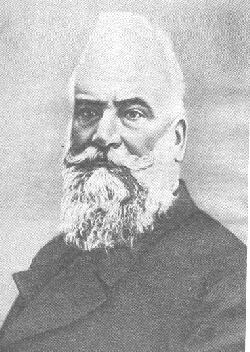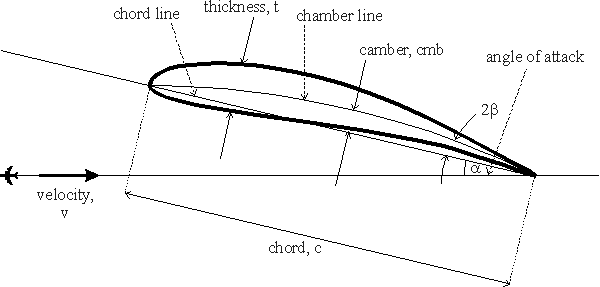THE JOUKOWSKI TRANSFORMATION


We introduce the conformal transformation due to Joukowski (who is pictured above)
![]()
and analyze how a cylinder of radius R defined in the z plane maps into the z' plane:
To summarize, moving the center of the circle along the x-axis gives thickness to the airfoil, moving the center of the circle along the y-axis gives camber to the airfoil.
In the following interactive application it is possible to move the center of the circle in the z plane and see the resulting transformed airfoil.
 |
We need to introduce some notations on airfoils.

The generic Joukowski airfoil has a rounded leading edge and a cusp
at the trailing edge where the camber line forms an angle ![]() with the chord line. In the cylinder plane,
with the chord line. In the cylinder plane,
![]() is related to the vertical coordinate of the
center of the cylinder so that
is related to the vertical coordinate of the
center of the cylinder so that
![]()
Usually the angle of attack (sometimes called physical) is
defined as the angle ![]() that the uniform
flow forms with the chord line. More interesting for aerodynamics is the
angle
that the uniform
flow forms with the chord line. More interesting for aerodynamics is the
angle
![]()
In fact, when the angle ![]() is zero, the lift,
as will be shown, vanishes. Then the angle
is zero, the lift,
as will be shown, vanishes. Then the angle ![]() is
often defined as the effective angle of attack.
is
often defined as the effective angle of attack.
INDEX
 |
 |
 |
 |
 |
 |